
NATURE AND NURTURE IN
MENTAL DISORDERS

A GENE-ENVIRONMENT MODEL
Second Edition
NATURE AND NURTURE IN
MENTAL DISORDERS

A GENE-ENVIRONMENT MODEL
Second Edition
Joel Paris, M.D.
Professor Emeritus of Psychiatry, McGill University,
Montreal, Quebec, Canada

Note: The authors have worked to ensure that all information in this book is accurate at the time of publication and consistent with general psychiatric and medical standards, and that information concerning drug dosages, schedules, and routes of administration is accurate at the time of publication and consistent with standards set by the U.S. Food and Drug Administration and the general medical community. As medical research and practice continue to advance, however, therapeutic standards may change. Moreover, specific situations may require a specific therapeutic response not included in this book. For these reasons and because human and mechanical errors sometimes occur, we recommend that readers follow the advice of physicians directly involved in their care or the care of a member of their family.
Books published by American Psychiatric Association Publishing represent the findings, conclusions, and views of the individual authors and do not necessarily represent the policies and opinions of American Psychiatric Association Publishing or the American Psychiatric Association.
The author has indicated that he has no financial interests or other affiliations that represent or could appear to represent a competing interest with his contributions to this book.
Copyright 2021 American Psychiatric Association Publishing
ALL RIGHTS RESERVED
Second Edition
Manufactured in the United States of America on acid-free paper
242322212054321
American Psychiatric Association Publishing
800 Maine Avenue SW
Suite 900
Washington, DC 20024-2812
www.appi.org
Library of Congress Cataloging-in-Publication Data
Names: Paris, Joel, author.
Title: Nature and nurture in mental disorders : a gene-environment model / Joel Paris.
Other titles: Nature and nurture in psychiatry
Description: Second edition. | Washington, DC : American Psychiatric Association Publishing, [2021] | Preceded by: Nature and nurture in psychiatry : a predisposition-stress model of mental disorders / by Joel Paris. Washington, DC : American Psychiatric Press, Inc., c1999. | Includes bibliographical references and index.
Identifiers: LCCN 2020033272 (print) | LCCN 2020033273 (ebook) | ISBN 9781615373345 (paperback) alk. paper | ISBN 9781615373680 (ebook)
Subjects: MESH: Mental Disordersgenetics | Mental Disorderspsychology | Genetic Predisposition to Disease | Stress, Psychological | Models, Psychological Classification: LCC RC455.4.G4 (print) | LCC RC455.4.G4 (ebook) | NLM WM 140 | DDC 616.89/042dc23
LC record available at https://lccn.loc.gov/2020033272
LC ebook record available at https://lccn.loc.gov/2020033273
British Library Cataloguing in Publication Data
A CIP record is available from the British Library.
Contents
- Part I
Theory - Part II
Mental Disorders - Part III
Implications

PREFACE TO THE SECOND EDITION
T HE FIRST edition of this book was published in 1999. That year marked the end of the decade of the brain. Over the next two decades, neuroscience continued to advance and has become the primary basis of clinical work. Yet, in many ways, we just do not know enough to practice on the basis of neuroscience. Some claim that research will lead to personalized medicine based on individual differences in the genome, but that is not likely to happen anytime soon.
Nineteen ninety-eight was a time when many of us anticipated that the decoding of the genome would lead to dramatic scientific breakthroughs. As far as both medicine and psychiatry were concerned, however, we were wrong. This new edition of the book draws on genome-wide association studies to show that most human traits are influenced by hundreds if not thousands of genes. This level of complexity means it will be many decades before genetics can be applied to understanding and treating mental disorders.
We should keep in mind that it is early days for neuroscience, and findings could eventually lead to more treatment options. Yet an equally strong literature supports the importance of environmental risk factors in mental disorders. This book shows that, for most conditions seen in psychiatry, both genes and environment play a major role in etiology.
Most of the previous edition of this book is now out of date; thus, the second edition has been almost entirely rewritten. This new version shows how current evidence supports an interactive model, combining recent data from neuroscience with a large body of evidence about the influence of the psychosocial environment. I have therefore changed the subtitle of the book from predisposition-stress to the more precise gene-environment model. In the first edition, I focused concern about reliance on overly environmental models of psychopathology, particularly those based on psychoanalysis or on narrowly based sociocultural theories. But those ideas have undergone a steady decline. Over the past 20 years, psychiatry has become much more biological in orientation. I now see a different set of problems, with the greater danger now lying in ignoring the environment entirely.
We hear the common mantra that mental disorders are brain disorders. There is, of course, no such thing as mind without brainthey are just different levels of looking at human thought, emotion, and behavior. But I disagree with reducing the mind, which has crucial emergent properties, to the level of neuronal function. I also disagree with the idea that the complexity of mental illnesses, from the most severe to the most common, can be fully explained at a cellular or neurochemical level. That narrow vision helps explain why so many patients today, particularly those diagnosed with depression, are being treated entirely with medication. This kind of practice is based on the idea that mental disorders can be entirely accounted for by abnormalities in neurotransmission or neuroconnectivity.
This second edition argues that this reductionistic view is not supported by firm evidence. Instead, it supports a biopsychosocial model in which the object of study is the mind and the person. It rejects both biological and psychosocial reductionism; instead, the link between mind and brain is best accounted for by gene-environment interactions. When one thinks interactively, a nature-nurture dichotomy becomes unnecessary.
These ideas are hardly original; most clinicians would agree with them in principle. However, the biopsychosocial model is often paid lip service and not taken seriously. The result is a practice in which clinicians replace understanding of life experience with DSM-based checklists and overly zealous pharmacological interventions. Another message of this book is that a broader model has important clinical implications. Genes and environment need to be studiednot separately, but in interaction. Based on a large body of research conducted over the past 20 years, combining neuroscience with social sciences could become the basis of more effective treatment.
Next page

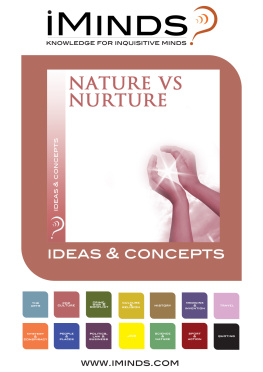

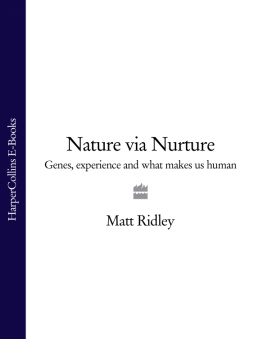
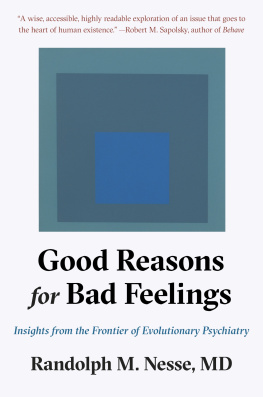

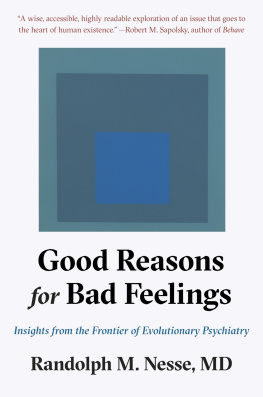

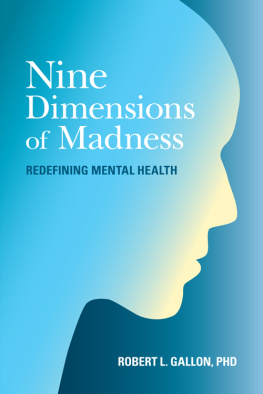


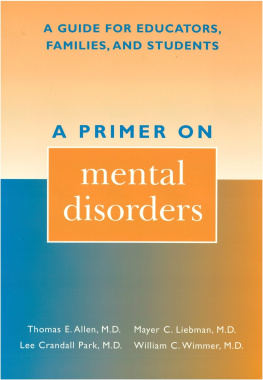

 A GENE-ENVIRONMENT MODEL
A GENE-ENVIRONMENT MODEL